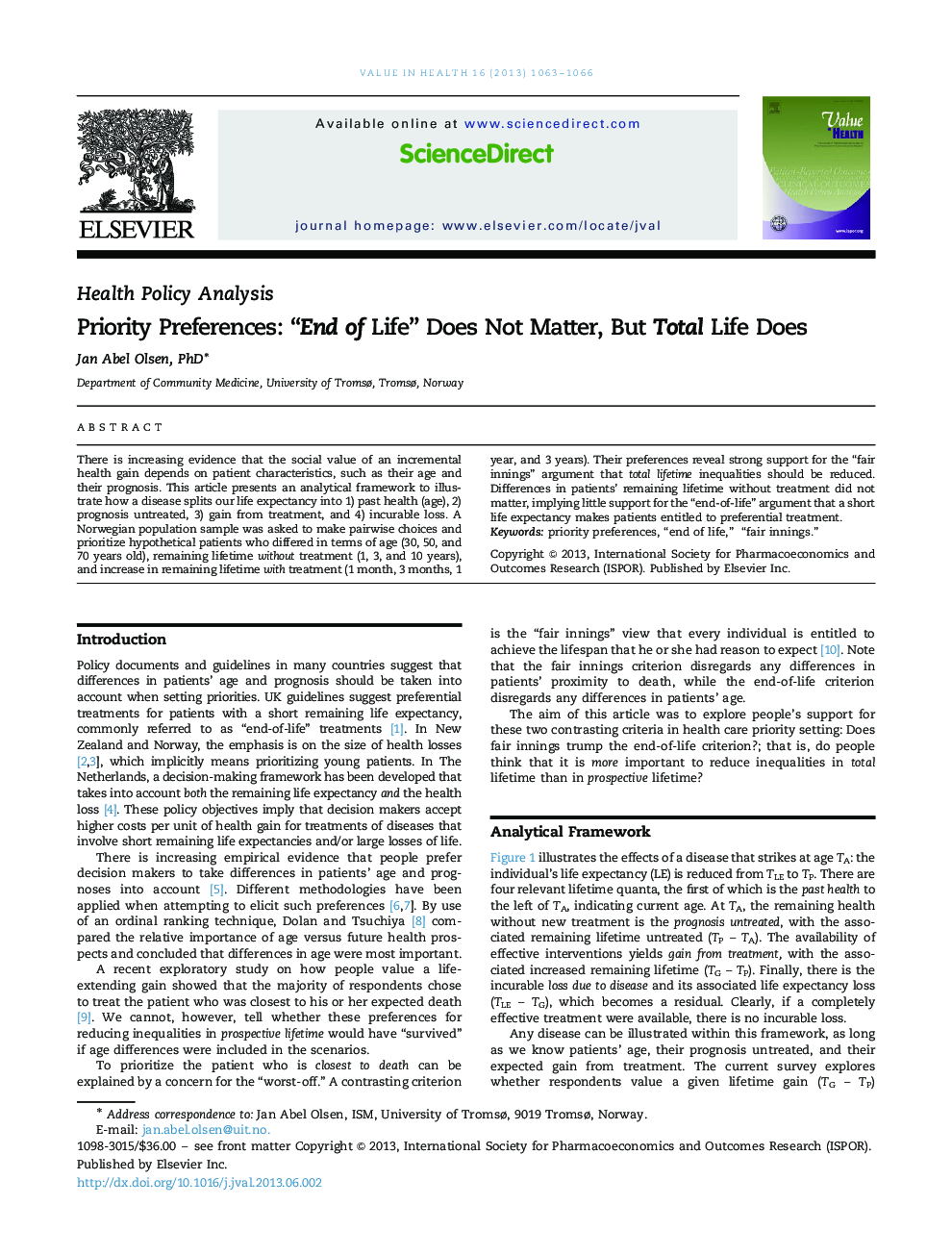| Article ID | Journal | Published Year | Pages | File Type |
|---|---|---|---|---|
| 10484680 | Value in Health | 2013 | 4 Pages |
Abstract
There is increasing evidence that the social value of an incremental health gain depends on patient characteristics, such as their age and their prognosis. This article presents an analytical framework to illustrate how a disease splits our life expectancy into 1) past health (age), 2) prognosis untreated, 3) gain from treatment, and 4) incurable loss. A Norwegian population sample was asked to make pairwise choices and prioritize hypothetical patients who differed in terms of age (30, 50, and 70 years old), remaining lifetime without treatment (1, 3, and 10 years), and increase in remaining lifetime with treatment (1 month, 3 months, 1 year, and 3 years). Their preferences reveal strong support for the “fair innings” argument that total lifetime inequalities should be reduced. Differences in patients' remaining lifetime without treatment did not matter, implying little support for the “end-of-life” argument that a short life expectancy makes patients entitled to preferential treatment.
Related Topics
Health Sciences
Medicine and Dentistry
Medicine and Dentistry (General)
Authors
Jan Abel PhD,
